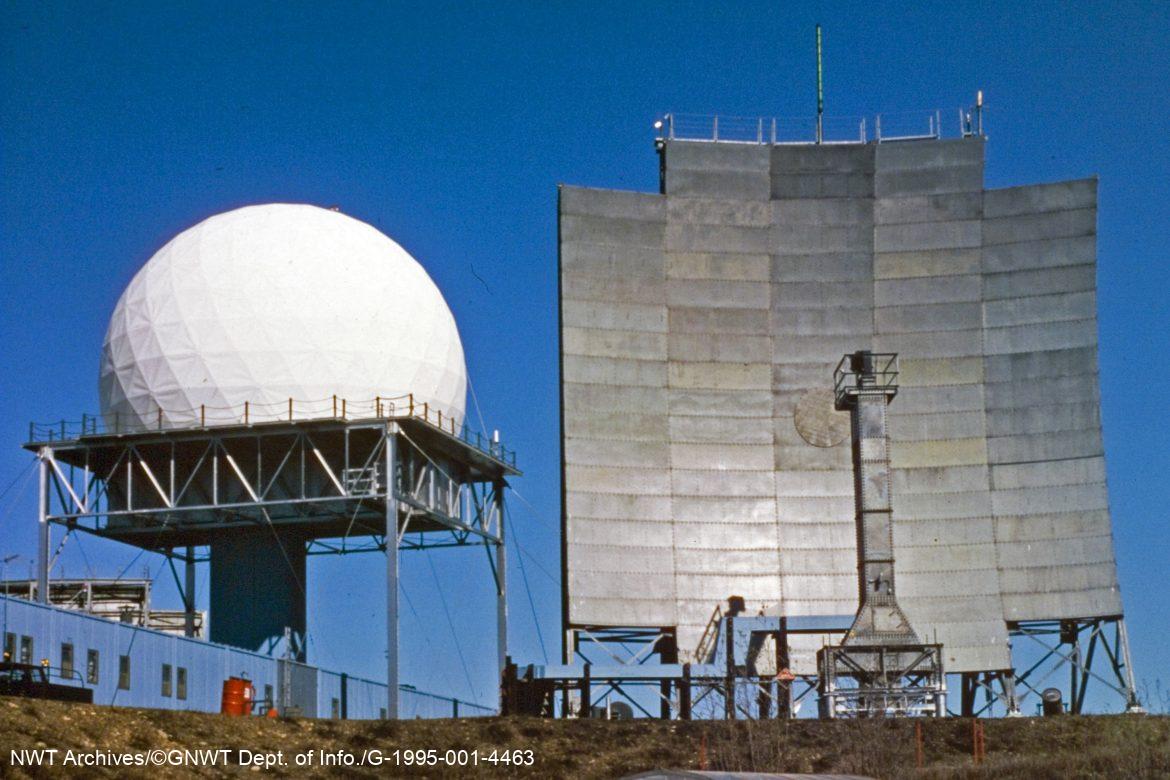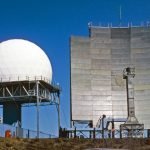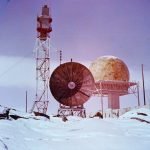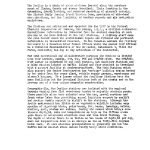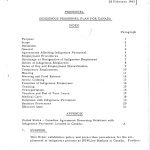1954
Distant Early Warning Line
On February 15, 1954, United States President Eisenhower signed legislation allowing for the construction of the Distant Early Warning Line (DEW Line), a network of 58 radar and communication sites stretching 5,000 kilometres across the top of the North American continent from Alaska to Greenland. The DEW Line was a product of the Cold War and was designed to give the American and Canadian military early warning of a Soviet bomber or missile attack ‘over the Pole.’ An estimated 25,000 people were involved in the planning and building of the DEW Line. It took 460,000 tons of material, moved by air, land and water to the Arctic, to complete the DEW Line by July 31, 1957. Canada was initially a silent partner to the DEW Line creation but took over management and staffing responsibilities.
Along with radar domes and communication towers, each station was its own self-contained environment with its own water service, heating systems, roads, recreation and sleeping areas. In many respects, the Canadian sites served as complete, isolated communities built on the Arctic coast and populated by southern male technicians and military personnel.
The introduction of southern building infrastructure, airports and wage employment altered the Inuit and Gwich’in communities connected to the chosen locations. Consultation for the building sites was minimal, and local employment was inconsistent. Though most workers during the construction phase were from the south, in a report issued in 1958 by Western Electric Corporation, the main construction contractor praised the few Inuit they employed. The report stated, “the native Eskimos provided their share of workers on the Line, too. Although baffled at first by modern machines and construction methods, they were quick to catch on. Whether driving dog teams or bulldozers, they proved conscientious and dependable.” The report did not mention the impact of the DEW line on local populations, the environment or the responsibility of the government to consider Inuit and Gwich’in rights to traditional land.
In 1985, work began to upgrade and transition the DEW Line into today’s North Warning System (NWS). Most sites are managed remotely by centralized stations, one of which remains in Inuvik.
The Canadian government undertook the considerable remediation required to decommission 21 locations to remove toxic substances, which cost taxpayers $575 million and took 15 years to complete.
